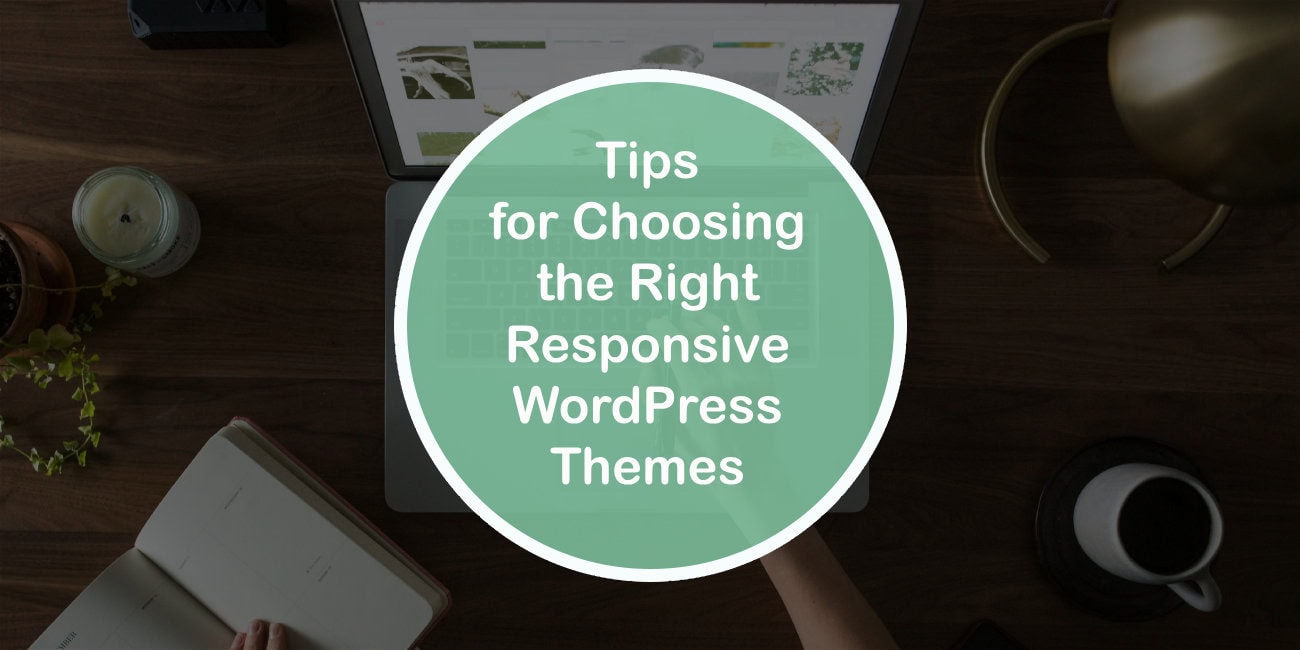Nearly half of all websites (43.1%) are built on WordPress, highlighting its dominance in the web development world. With so many websites using WordPress, choosing a responsive theme is key to creating a successful site. A good theme helps your website look professional and work well on any device, from desktops to smartphones.
However, with so many options available, it can be challenging to find the right theme that fits your site’s purpose, offers customization options, and delivers great performance for a positive user experience. Additionally, considering how the theme integrates with your domain names and hosting setup can prevent technical issues down the line.
In this guide, we’ll cover seven essential tips to assist in selecting an attractive yet responsive WordPress theme, so your website remains not only visually appealing but user-friendly on multiple platforms.

Define Your Website’s Purpose and Goals
Clearly outline the purpose and goals of your website before making any theme choices. What kind of website are you making—a commercial website, an eCommerce site, a portfolio, or a personal blog? Different themes meet different kinds of needs.
For example, an eCommerce theme will enable online businesses with features like shopping carts and product pages, but a portfolio theme may prioritize galleries and visual display. Knowing the goals of your website can help you focus on themes that best suit your requirements.
Integrate with Domain Names for Your Website
When searching for domain names for your website, it’s essential to consider how effectively a responsive WordPress theme will integrate with those domain names. The setup procedure can be greatly streamlined by using a theme that enables seamless integration with your hosting environment and domain settings. This will save you time and help you avoid potential technical complications down the line.
Look for themes that offer compatibility with various domain management features, allowing you to effortlessly connect your domain and optimize your site’s performance. Furthermore, see if the theme has configurable options for SEO settings, meta tags, and domain-related components like the favicon. These capabilities are essential for optimizing SEO, strengthening the branding of your website, and guaranteeing a consistent user experience across all digital touchpoints. A theme that complements your domain and hosting setup is vital for building a strong online presence.
Prioritize Mobile Responsiveness
Your theme must be fully responsive in today’s mobile-first world. A responsive theme offers a consistent user experience on all platforms by adjusting its style and content to match various screen sizes. Test the theme to make sure it retains its visual appeal and usability across a range of devices and screen sizes. Check if the theme adjusts images, text, and navigation elements smoothly without requiring horizontal scrolling.

Check for Browser Compatibility
All of the major web browsers, including Chrome, Firefox, Safari, and Edge, should work well with your site. A theme that is incompatible with certain browsers might provide negative user experiences and have a detrimental effect on the usability of your website.
Look for themes that list browser compatibility in their documentation or user reviews. You can also use tools to test your website’s appearance in different browsers before finalizing your choice.
Evaluate Theme Customization Options
A quality WordPress theme should provide you with a great deal of modification flexibility without requiring complex coding knowledge. Try searching for themes with an intuitive customization window that allows you to make changes easily and intuitively. Features like drag-and-drop page builders and the capability of changing layouts, colors, and fonts are essential when building websites that reflect both your personal style and business needs.
An SEO theme with advanced customization features will enable you to craft a unique and professional-looking site even without extensive technical knowledge. Be sure that it supports widget areas, custom menus, header and footer customization options, and pre-built modules that can easily be tailored to suit your requirements. This will save time during the design process.
Look for High-Quality Code and Performance
The general functionality, security, and long-term survival of your website are greatly influenced by the caliber of a theme’s coding. Choose themes that adhere to WordPress coding standards and are optimized for speed, as these are examples of best development practices. Bloated theme code will seriously slow down your website, which can negatively impact user experience and lower your website’s search engine rankings.
Evaluate the theme’s documentation and user reviews carefully to gain an understanding of its performance metrics and coding quality to prevent similar problems. Moreover, consider themes whose creators actively maintain and update them to guarantee compatibility with the most recent WordPress versions, security updates, and industry standards. Frequent updates also show a dedication to enhancing the theme’s functioning, incorporating new features, and fixing any bugs.
User Ratings and Support Review
User ratings and reviews provide valuable insights into the theme’s reliability and user satisfaction. So, look for themes that have high ratings and positive feedback from users. Reviews can reveal common issues and how effectively the theme’s support team addresses them.
Also, see if the theme has live chat, email help, or forum support available. Having dependable support can be essential if you run into any problems or require assistance with modification.
Final Thoughts
Selecting the right responsive WordPress theme requires carefully considering various factors, ranging from mobile responsiveness and browser compatibility to customization options, theme quality, and their impact. By understanding your website goals and prioritizing key features like domain integrations, you can find a solution that not only looks appealing but also performs seamlessly across devices and platforms. This will provide visitors with an exceptional user experience and help you meet online objectives more successfully.

